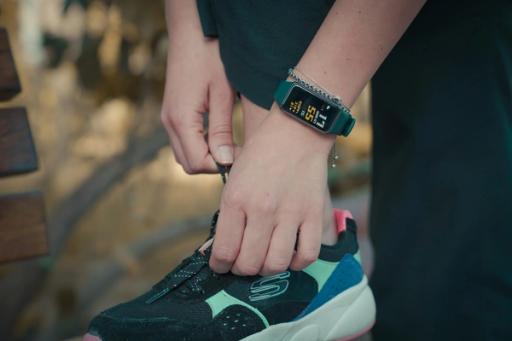
You’ve decided to get fit. Walking is a great way to ease into a healthier lifestyle. But every time you look up calorie-burning or weight-loss information, you see references to steps to calories burned. What does this even mean? If you are like most people, you’ll want to improve your fitness by burning calories and losing weight. But before you can do this, you need to understand the relationship between your daily steps and the calories you burn. How Are Calories Measured? This article will offer valuable insights to help you achieve your goals, like effortlessly tracking your steps, accurately measuring calories burned, and turning daily walking into a simple, practical path to lasting fitness and weight loss.
Cal AI’s step and calorie tracker can help you achieve your objectives by showing you the relationship between daily steps and calories burned. This simple, effective tool will help you effortlessly track your steps, accurately measure calories burned, and turn daily walking into a practical path to lasting fitness and weight loss.

Calorie burn varies based on body weight, walking speed, and terrain. As a result, it’s always best to use an estimation tool for a more precise calculation than simply assuming how many calories you’ve burned based on your step count. To estimate calorie burn from steps, start with the basic formula for estimating calories burned per step. On average, a person burns about 0.04 calories per step, but this number can change based on individual factors. For instance, a typical 160-pound person of average height will burn about 40 calories per 1,000 steps. The chart below shows how many calories you'd burn in 1,000 steps, 5,000 steps, 10,000 steps, or more. Here’s what you need to know about converting your steps to calories burned:
Find your stride length. This measurement can often be confused with step length, which can be measured from the heel print of one foot to the heel print of the other foot in just a single step forward. Stride length is the distance traveled in two steps, with both the left and right foot.
On average, an adult’s step length is 2.5 feet, but this can vary significantly based on an individual’s:
You can follow a few easy steps to find your exact stride length! Ensure you have something to mark your starting point, such as chalk or tape. You’ll also need a tape measure.
Once you know how many feet it took to walk 10 steps, you can divide by 10 to find your stride length.
For example, you walked 12 feet with those 10 steps. To find your stride length, divide 10 by 2 (this will give you stride count), then take that number (5) and divide that into the total distance you walked (in this case, 12 feet). Mathematically, this will look like five strides over 12 feet = 2.4 feet of stride length, or 12 divided by 5 = 2.4. This is just one of the many ways that stride length can be determined.
Once you know your stride length, calculating the distance you’ve walked is straightforward. You can use our steps-to-miles (or, if you prefer, in kilometers) or multiply the number of steps taken by your stride length to calculate the distance manually.The following formula shows how to calculate the distance walked from the steps taken:
distance in feet = number of steps × stride length
The result is the distance traveled in the same unit you used to measure your stride length. So, if you measured your feet stride length, the result is the distance you walked in feet. For example, your smartwatch alerts you that you’ve walked 9,500 steps today. Knowing from previous calculations that your stride length is 2.4 feet, you can then do the math to see how many miles this converts to.
9,500 steps × 2.4 stride length = 22,800 feet walked.
You can convert this to miles by dividing the distance in feet by 5,280 or using our feet-to-miles converter. If you want to do the math manually, it would look like 22,800/5,280 = 4.31 miles.
Now, you need to figure out how much time you spend walking. If you go on a single walk, it is easily measured; nevertheless, if you’ve been walking in small amounts throughout the day, you need to calculate the time spent walking using a formula. Given your average walking pace, you can divide the total distance by your pace to determine the time you spent walking. Your pace can also be referred to as your overall speed of walking.
time = distance ÷ pace
Thus, the walking time equals the distance traveled divided by the pace.
The Metabolic Equivalent of Task (MET) is a measure that quantifies the energy cost of physical activities. In essence, one MET is the rate of energy expenditure while sitting still, while higher METs show how much energy is being utilized with exertion.
For example, METs ranging from 1 to 3 are typically considered very low-intensity, while moderate-intensity activities can range from 3 to 5.9 METs. Anything above 6 METs is considered high-intensity activity. Think of it like this: 1 MET equals 3.5 milliliters of oxygen per kilogram of body weight per minute.
Strolling has a MET value of approximately 3.0, while brisk walking has been noted to be upwards of 5.4 METs; nonetheless, these averages will vary depending on the speed and intensity of exercise. To calculate calories burned during walking, all you need to do is find the MET value based on your walking pace, then use the MET formula with your body weight and time spent walking:
kcal = time [minutes] × ((MET × 3.5) × weight [kg] ÷ 200)
This is the same method our calories burned walking and calories burned running calculators use. While this method estimates how many calories you will burn during a walk, factors like metabolism, terrain, and walking style can influence the calories burned.
To convert your steps to calories burned, you must know your approximate steps per mile. Most fitness trackers estimate your steps per mile from your height. An average number at a brisk walk or leisurely running pace is 2,000 to 2,400 steps per mile.
This number may help if you plan on significantly increasing your steps or tracking your walking over time to monitor your progress. That way, you can know how many calories you’ve burned without having to do any calculations for future activities. You can also measure your stride length to find your steps per mile or count your steps over a measured mile for greater accuracy.
Alternatively, you can use a steps-per-mile chart, along with your height and weight, to estimate calories burned at various step counts. Here are some charts that are based on height and weight. These will give you an approximate number of calories burned per step.

Use the chart below to estimate calories burned by step count if your height is 6 feet or more. This assumes that you take 2,000 steps per mile.
How many calories you burn while walking 10,000 steps a day will vary widely based on body size, age, genetics, pace (brisk or slow), and terrain (steep hills or primarily flat ground).
This will vary per person, but it usually takes about 2,000 to 3,000 steps to burn 100 calories. A pedometer is an excellent tool for measuring steps and other metrics if you're looking to track your steps. Like this chart, many fitness trackers or watches can estimate total caloric expenditure based on your inputs, such as height, weight, and gender.
To increase caloric expenditure while walking, try speeding up, running intervals, and using fitness walking poles. Most fitness trackers don't accurately track activities that aren't step-based, so they may not be included in your total steps. You can calculate step equivalents for other activities based on the calories burned.

While step-to-calories-burned calculators use your body weight to estimate how many calories you burn while walking, walking speed is also an essential factor that impacts your caloric expenditure.
Generally, the faster you walk, the more calories you’ll burn. This is because walking briskly requires more energy and increases your heart rate, resulting in a higher caloric expenditure. For instance, a 160-pound person walking at a speed of 3.5 miles per hour will burn about 283 calories after an hour.
If they increase their pace to 4.5 miles per hour, their caloric expenditure will jump to 367 calories. To burn more calories, pick up the pace and stride out purposefully. Swing your arms and try to walk as quickly as possible without breaking into a jog.
Another factor that affects the calculation of calories burned by your steps is the walking terrain. Walking uphill and over rough ground burns more calories than walking on flat, even surfaces. The more challenging the surface, the harder you’ll need to work to maintain balance, overcome gravity, and propel yourself forward.
This is likely reflected in a more elevated heart and breathing rate. You can burn more calories by seeking out hills or walking on uneven trails. This will use more energy than walking on flat pavements or using a motorized treadmill, even if you do the same number of steps.
The calculator uses your body weight to determine how many calories you burn while walking. Nevertheless, carrying extra weight, e.g., a backpack, will increase your caloric expenditure. While it’s almost impossible to determine how much carrying weight accurately will affect your caloric expenditure, walking with a backpack or weighted vest will inevitably burn more calories than walking without one.
One way to estimate how many extra calories you’ll burn while carrying a load is to add the extra weight to your body weight when you do your steps to calculate calories. For example, if you weigh 180 lbs. but plan on carrying an additional 25 lbs., enter 205 lbs. in the bodyweight box.
While not 100% accurate, this should give you a rough idea of how many extra calories you’ll burn while carrying weight.
Your fitness level affects your steps in calculating calories burned. The fitter you are, the easier walking becomes, and the fewer calories you’ll burn to cover the same number of steps. As a result, less-fit individuals will burn more calories than their fitter counterparts as they must work harder. As such, your calorie count will decrease as you get fitter.
Nevertheless, walking faster can offset this, which will probably happen naturally as your fitness improves.
Calorie tracking can be tedious, especially if you do it manually. Fortunately, Cal AI is a revolutionary app that transforms calorie tracking with cutting-edge AI technology. Just snap a photo of your meal, and Cal AI does the rest. Cal AI combines your phone's depth sensor with advanced AI models to:
With 90 percent accuracy on visible foods and multiple tracking options, Cal AI makes nutrition tracking effortless. Gone are the days of tedious manual logging in calorie tracking apps. Whether scanning a full meal or a quick snack, Cal AI gives you accurate nutritional information in under 15 seconds.
The AI learns from your feedback, continuously improving its accuracy. Stay on track with personalized insights and brilliant reminders. Cal AI makes achieving your fitness goals simpler than ever. Today, track your calories with your camera with Cal AI's AI calorie tracker.